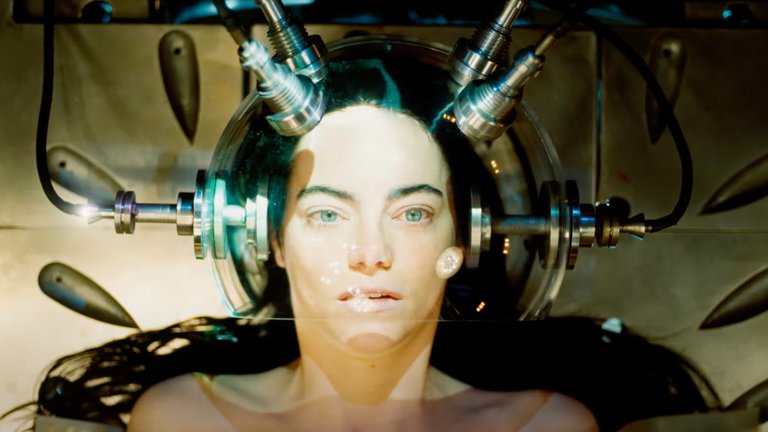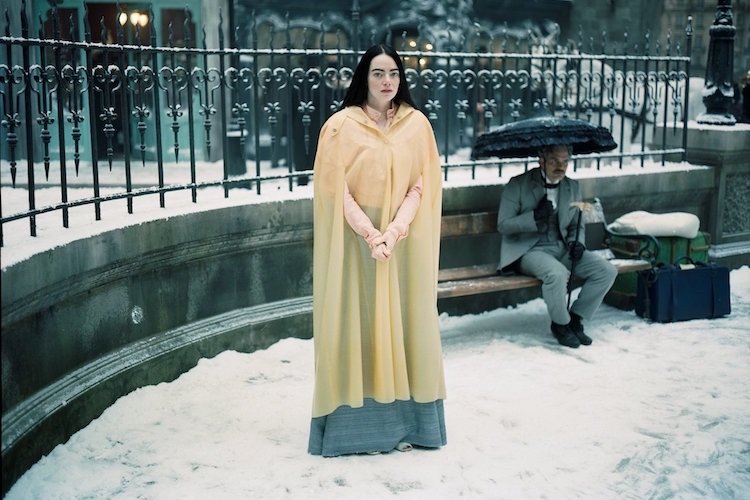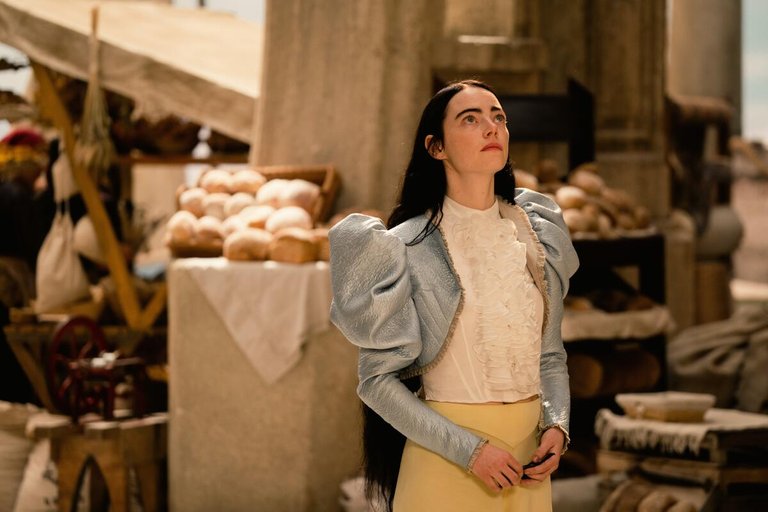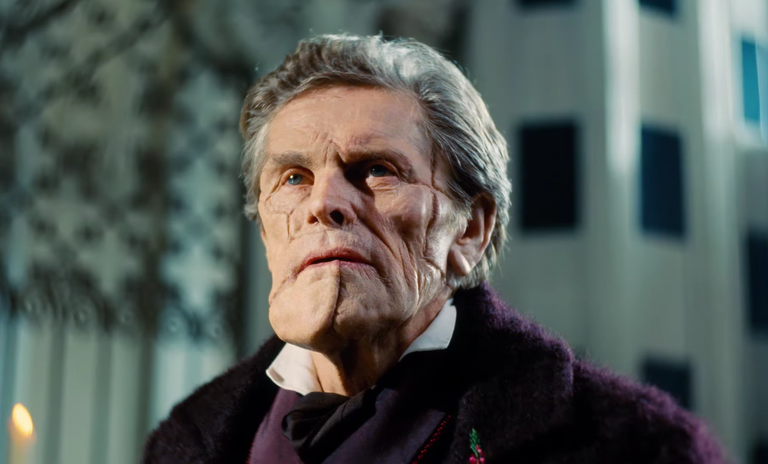Joonto’s Films Reviews: Poor Things

When I think how I get to watch some movies, I laugh. Life is so unpredictable, despite the whole AI industry is so obsessed into believing it can be predicted, by ascribing it into patterns.
Companies pour billions into algorithms to understand “how you chose this product over the other!”
When you tell them that you heard about it through friends, stumbling over a random conversation, the marketing people lose their minds: “No, no, no, no! This cannot be!!! Where is the pattern here???”
The human brain is the biggest mystery in the universe, and despite what they like to believe, neuroscience and the artificial intelligence industry have just scratched the mind’s surface, sitting still far from its unfathomable inner workings.
If we want to understand something more about the human brain, we must give in to fantasy, and allow ourselves to swim through the oceans of time back to the Victorian Era.
The odd setting for a surreal tale
Poor Things reveals itself as a gross, yet sharp bricolage made out of Dr Frankenstein and The Addams Family, mixed with Jules Verne adventures and dressed with a pinch of David Lynch’s surreal dark comedy.
“What the hell is this?”, you may ask. Well, I opened this article talking about the human brain. What if a 19th century crazy scientist collects the body of a woman who just committed suicide by jumping on the Thames, takes the body to his lab, sees she was pregnant, her unborn baby is still kind of alive, and so he decides to transplant the baby’s brain into the body of her freshly deceased mother???

This is the horrifying, yet glorious, disturbing, yet mesmerising birth of Bella Baxter! A baby into the body of an adult woman, trapped in a luxury, yet decadent villa-lab in Victorian London looks like an odd screen to project the infinite range of experiences a human being can go through. Yet it works graciously.
Usually, my film reviews are spoiler-free, but here is not possible to keep 100% away from revealing the plot. I just want to prepare you — or maybe persuade/dissuade/dare you — to watch this odd masterpiece.
The plot is not the most important component of this machine, anyway. The beating heart of this movie lies in the emotions, the quirk moments it creates over Bella’s incredible journey, sweetened by 1920s style backgrounds and filmography. They taste a bit fantasy, and a bit Metropolis sci-fi vibes.
The whole film is an allegory that aims to explore the origin of social rules, that questions what is socially acceptable, what is normal, what’s not and where these rules come from.
Bella will first experience the struggles of moving and talking like an adult. Spoken language is the very first conditioning society bends us into. She will then go through rebellion, demanding to explore what’s outside of the villa. Request that her “creator” objects firmly, a bit for paternal instinct, a lot for the rigor of science. If Bella were to interact with other humans, that could tamper the experiment. But Bella is way more than an experiment. She’s a human who can feel, and she can feel much more than anyone else. And she’s curious about every sensation running through her body, including those ones deemed inappropriate in the Victorian Era (but even today).
The journey
This film is nothing else than a journey, told through allegories that pain the whole human existence arc. It’s just a colorful painting, a caricature of the journey each one of us embarks into throughout our own lives. The settings differ for all of us, but the struggles bear the same price tags.
As Bella explores her own body and learns about forbidden feelings (forbidden by whom, by the way?), her desire to explore the outside world grows as fast as the fire in her wombs. It will just take one man who knows how to touch Bella’s “chords” to allow the lab girl to collect that extra energy, that extra grit, that extra determination, to break free from her father/creator.
Colors are power
The savvy use of photography in this work is phenomenal. The opening is shot in black and white, with impeccable use of lights and shades. As soon as Bella breaks free and embarks in her journey around Europe (which is a metaphor to visualize the various phases of our lives as soon as we partake from our parents), the film gets painted in bright colors hard to see in modern movies.

There is this pretentious trend in modern films to depict everything dark, doom and gloomy, stuck around black, grey, brown, and white, as if the usage of colors was childish. This is even more pronounced when directors set their stories in the past. In a grotesque attempt to appear more realistic, these directors go all for dark tones, as if this could better convey the harsh nature of reality. Dark tones can be powerful, but if abused, they become heavy, even ridiculous. Luckily, Yorgos Lanthimos doesn’t need “color-validation” from his audience, and he’s not afraid to go fully into pastels, even if Poor Things is a dark comedy, which has some brutal moments. Brutality tough is always represented in a metaphorical way, through surreal scenes, dialogues, and interactions. This is more powerful, because all of this apparent “overacting” leaves room for real feelings. And what’s more realistic than feelings?
Painting feelings
The first stop of Bella’s journey is Lisbon and this would have been already enough to strike a chord in me. I live here and I loved this fictionalized version of the city. I even forgave the writers for putting “la siesta” in Portugal. “Siesta” is the moment for Bella to fully discover the carnal pleasures of love. Sex has no limits when your being is not strapped to the seat by arbitrary social norms.
But the streets of Lisbon hide an even bigger pleasure: pastel de nata, the iconic pastry from the Portuguese capital. Then an even more touching pleasure: Fado music and its inexplicable melancholic energy that makes you feel good about being sad.
It’s the kind of honeymoon you dream of. It’s an increasing rollercoaster of positive emotions for this woman-child. Until, Bella and her lover sail on a ship… Here Bella meets another kind of person: a cynical, eager to show her the horrors and the pain of this world. The cynical will try to convince Bella the world is doomed and seeking anything good in it is vain. Will he succeed? That’s not something I can spoil…

I can only say that Bella will handle the decay of her romance pretty well, going down to explore the dark side of sex. “Jumping” no more for love, but for vile money, something that seems indispensable in this “doomed world”.
Before you jump into hasty (and ridiculous) conclusions, like the ones I read on some silly Anglo-American publications, the transition of Bella into prostitution is again another allegory. The message is not “women should try to become whores to fully exercise their freedom and empower themselves”. It’s a wider message willing to show what we are ready to do for money. After all, stats show that around the world, 85% of workers hate their own jobs! Just like a prostitute will dislike 85% of the men she will sleep with, 85% of you will hate your job. Yet, you will do it anyway, without questioning the morality of going against your nature, of forcing yourself (and others) to do something hateful, even repulsive, that affects both your mental and physical health.
And on top of this, there is of course a denounce about how women have been judged mostly for their sexuality. A line from the movie says it all: “Whoring is the worst thing a woman can do!!!”
We can try a little mind experiment. Take the following women and notice the first thought that comes to your mind. Read slowly:
- Exploitative and abusive CEO
- Drug dealer
- Extremist political leader
- Terrorist
- Sex worker
Now let’s scroll and see if these are more or less the things you thought of:
- Exploitative CEO (strong career woman!)
- Drug dealer (a rebel woman with strong entrepreneurial spirit!)
- Extremist political leader (a woman standing tall for her cause!)
- Terrorist (woman of action and badass!)
- Sex worker (dirty fucking whore!)
See? If you didn’t think those, it was something similar for sure.
Unfortunately, there are many worse things a woman (and any human being) can do than “whoring”, but society is still obsessed about controlling (and repressing) women’s sexuality. Don’t misunderstand me here. Even men’s sexuality is repressed and twisted, more than you can imagine, but that’s stuff for another article.
For now, enjoy the hilarious portrayal of a lab-woman entering the world of prostitution without the filters of common social morality, with the good and bad that such a condition can imply.
Don’t worry; this phase is still portrayed with striking deadpan humour pivoting around surreal characters and real nudity. Yeah, no censorship, don’t worry…
Acting performances
All the cast is great, but three players stand out for grandiosity.
Emma Stone

Yorgos Lanthimos crafted a magical world where Emma Stone could unleash her full potential. She didn’t simply deliver; she nailed it! What a performance! I can’t even imagine the hurdles Stone had to go through. Bella Baxter is a role that only few actresses could have taken on, and Stone made it look as if it were the simplest gig in the world!
I honestly didn’t watch many of Emma Stone’s movies, so for me it was even more incredible to see the same girl from Zombieland playing such a complex character, that is written to represent the whole human condition!
Mark Ruffalo

The stunning performance of the leading actress should not shadow the solid delivery of Mark Ruffalo. His character is vital to pull out all the impulsive curiosity residing within Bella. The chemistry between Ruffalo and Stone is so magnetic that you re like drawn inside the screen and you almost feel as if you were there with the characters, standing in front of them while they perform on a theatre stage.
William Defoe

But no couple is great without a triangle, completed by the most incredible character actor in activity: Mr William Defoe! His character can be described as a Dr Frankenstein who is also the monster of Frankenstein, but with a touch of Van Helsing. All in one is not a daunting task for an actor capable of delivering long quirky rants without missing a single beat. Sometimes I have no idea what the hell Defoe says, but I love it every single time I see him on screen!
Conclusion
Poor Things is just about us, nothing more. We are all poor things at the mercy of a mad world which is capable of making us go through pretty much everything it wants. The world was here before us and will be here long after us. Social norms can give us a sense of order and security, but this hope is just temporary, and even when lasting, there will always be someone new questioning the order you had established before, and throwing it all into the air.
Are you ready for such a dance?